Andrea Massa
A Physics-Driven AI Approach for Microwave Imaging of Breast Tumors
Jan 05, 2024Abstract:In this paper, an innovative microwave imaging (MI) approach for breast tumor diagnosis is proposed that employs a differential formulation of the inverse scattering problem (ISP) at hand to exploit arbitrary-fidelity priors on the inhomogeneous reference/healthy tissues. The quantitative imaging of the unknown tumor is then rephrased into a global optimization problem, which is efficiently solved with an ad-hoc physics-driven artificial intelligence (AI) strategy inspired by the concepts and guidelines of the System-by-Design (SbD) paradigm. The effectiveness, the robustness, the reliability, and the efficiency of the proposed method are assessed against both synthetic and experimental data.
Optically-Transparent EM Skins for Outdoor-to-Indoor mm-Wave Wireless Communications
Aug 17, 2023



Abstract:Optically-transparent opportunistic electromagnetic skins (OTO-EMSs) are proposed to enable outdoor-to-indoor (O2I) millimiter-wave (mmW) wireless communications with existing windows/glass-panels. More in detail, static passive EMSs consisting of optically-transparent conducting patterned layers attached to standard glass-panels are designed. Towards this end, both the phase coverage and the optical transparency of a meshed copper-based meta-atom printed on a non-dedicated insulated glass substrate are optimized. Successively, the feasibility of OTO-EMSs able to support mmW high-efficiency O2I transmissions along non-Snell refraction directions is numerically demonstrated.
Reconfigurable and Static EM Skins on Vehicles for Localization
Aug 08, 2023



Abstract:Electromagnetic skins (EMSs) have been recently considered as a booster for wireless sensing, but their usage on mobile targets is relatively novel and could be of interest when the target reflectivity can/must be increased to improve its detection or the estimation of parameters. In particular, when illuminated by a wide-bandwidth signal (e.g., from a radar operating at millimeter waves), vehicles behave like \textit{extended targets}, since multiple parts of the vehicle's body effectively contribute to the back-scattering. Moreover, in some cases perspective deformations challenge the correct localization of the vehicle. To address these issues, we propose lodging EMSs on vehicles' roof to act as high-reflectivity planar retro-reflectors toward the sensing terminal. The advantage is twofold: \textit{(i)} by introducing a compact high-reflectivity structure on the target, we make vehicles behave like \textit{point targets}, avoiding perspective deformations and related ranging biases and \textit{(ii)} we increase the reflectivity the vehicle, improving localization performance. We detail the EMS design from the system-level to the full-wave-level considering both reconfigurable intelligent surfaces (RIS) and cost-effective static passive electromagnetic skins (SP-EMSs). Localization performance of the EMS-aided sensing system is also assessed by Cram\'er-Rao bound analysis in both narrowband and spatially wideband operating conditions.
Multi-Scaling Differential Contraction Integral Method for Inverse Scattering Problems with Inhomogeneous Media
Nov 28, 2022



Abstract:Practical applications of microwave imaging often require the solution of inverse scattering problems with inhomogeneous backgrounds. Towards this end, a novel inversion strategy, which combines the multi-scaling (MS) regularization scheme and the Difference Contraction Integral Equation (DCIE) formulation, is proposed. Such an integrated approach mitigates the non-linearity and the ill-posedness of the problem to obtain reliable high-resolution reconstructions of the unknown scattering profiles. The arising algorithmic implementation, denoted as MS-DCIE, does not require the computation of the Green's function of the inhomogeneous background, thus it provides an efficient and effective way to deal with complex scenarios. The performance of the MS-DCIE are assessed by means of numerical and experimental tests, in comparison with competitive state-of-the-art inversion strategies, as well.
RoHNAS: A Neural Architecture Search Framework with Conjoint Optimization for Adversarial Robustness and Hardware Efficiency of Convolutional and Capsule Networks
Oct 11, 2022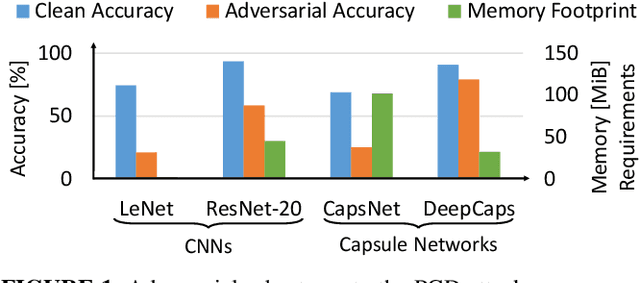



Abstract:Neural Architecture Search (NAS) algorithms aim at finding efficient Deep Neural Network (DNN) architectures for a given application under given system constraints. DNNs are computationally-complex as well as vulnerable to adversarial attacks. In order to address multiple design objectives, we propose RoHNAS, a novel NAS framework that jointly optimizes for adversarial-robustness and hardware-efficiency of DNNs executed on specialized hardware accelerators. Besides the traditional convolutional DNNs, RoHNAS additionally accounts for complex types of DNNs such as Capsule Networks. For reducing the exploration time, RoHNAS analyzes and selects appropriate values of adversarial perturbation for each dataset to employ in the NAS flow. Extensive evaluations on multi - Graphics Processing Unit (GPU) - High Performance Computing (HPC) nodes provide a set of Pareto-optimal solutions, leveraging the tradeoff between the above-discussed design objectives. For example, a Pareto-optimal DNN for the CIFAR-10 dataset exhibits 86.07% accuracy, while having an energy of 38.63 mJ, a memory footprint of 11.85 MiB, and a latency of 4.47 ms.
Multi-Resolution Subspace-Based Optimization Method for the Retrieval of 2D Perfect Electric Conductors
Aug 23, 2022
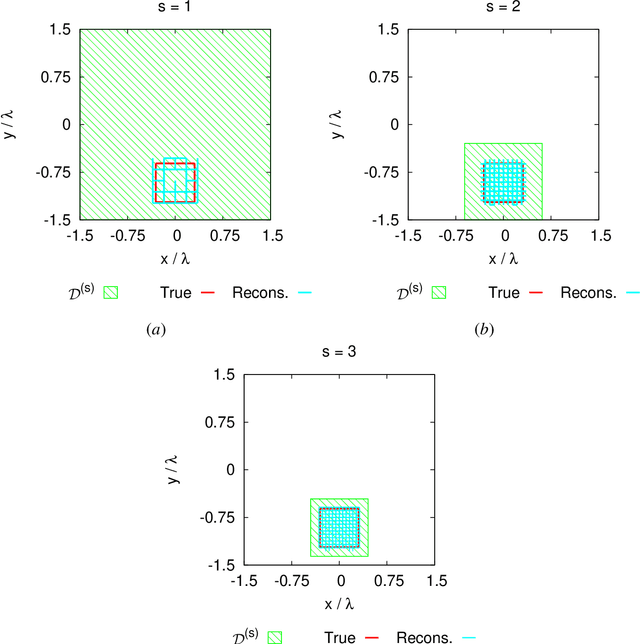
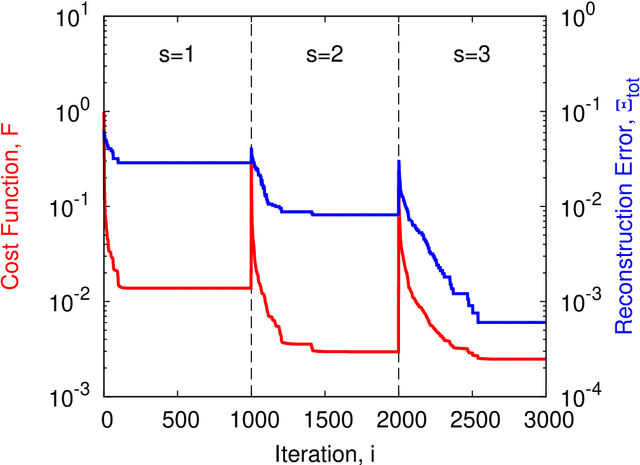
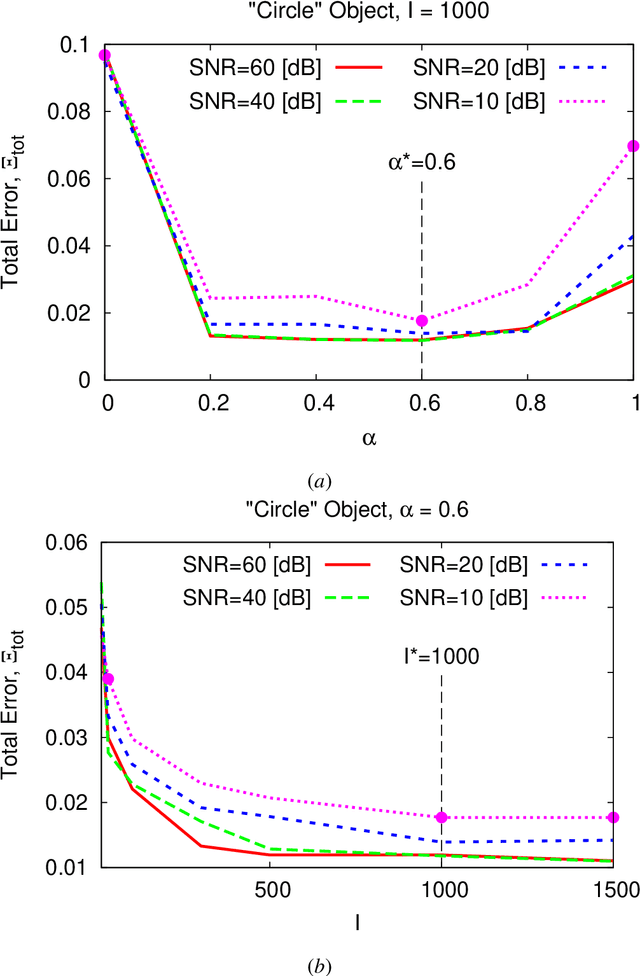
Abstract:Perfect Electric Conductors (PECs) are imaged integrating the subspace-based optimizationmethod (SOM) within the iterative multi-scaling scheme (IMSA). Without a-priori information on the number or/and the locations of the scatterers and modelling their EM scattering interactions with a (known) probing source in terms of surface electric field integral equations, a segment-based representation of PECs is retrieved from the scattered field samples. The proposed IMSA-SOM inversion method is validated against both synthetic and experimental data by assessing the reconstruction accuracy, the robustness to the noise, and the computational efficiency with some comparisons, as well.
A Self-Replicating Single-Shape Tiling Technique for the Design of Highly Modular Planar Phased Arrays -- The Case of L-Shaped Rep-Tiles
Aug 18, 2022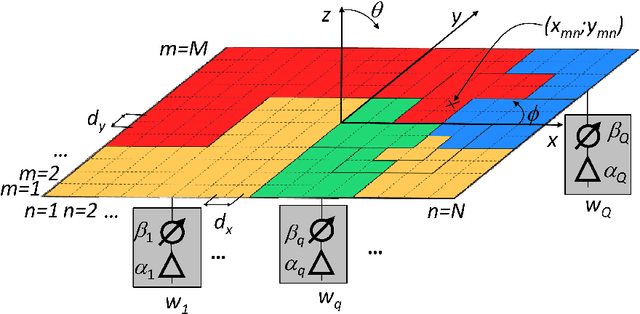


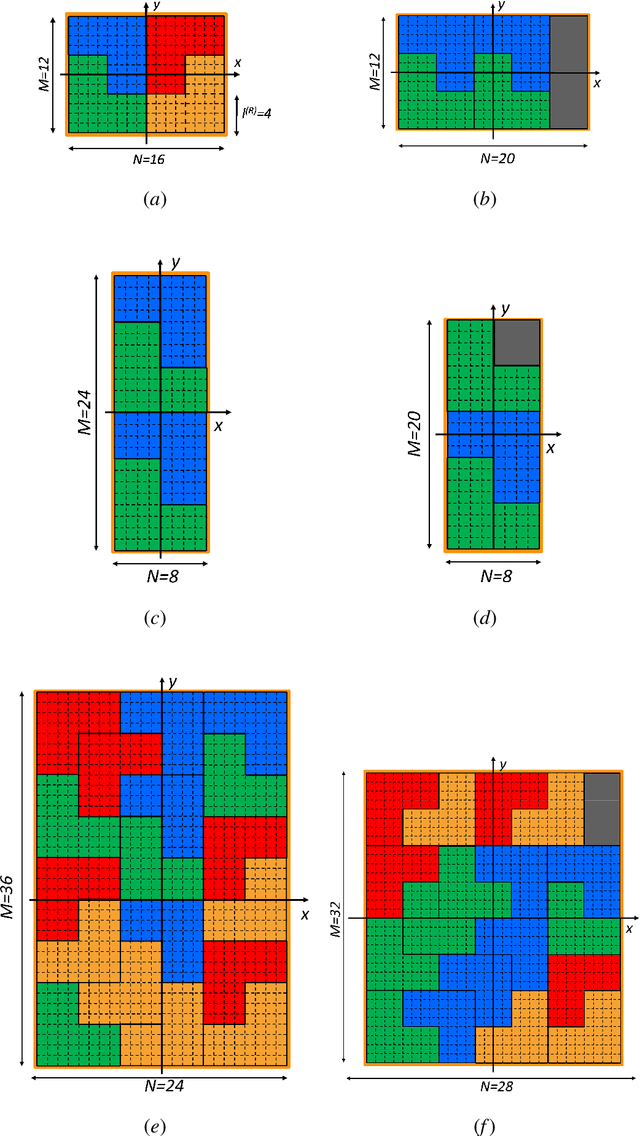
Abstract:The design of irregular planar phased arrays (PAs) characterized by a highly-modular architecture is addressed. By exploiting the property of self-replicating tile shapes, also known as rep-tiles, the arising array layouts consist of tiles having different sizes, but equal shape, all being generated by assembling a finite number of smaller and congruent copies of a single elementary building-block. Towards this end, a deterministic optimization strategy is used so that the arising rep-tile arrangement of the planar PA is an optimal trade-off between complexity, costs, and fitting of user-defined requirements on the radiated power pattern, while guaranteeing the complete overlay of the array aperture. As a representative instance, such a synthesis method is applied to tile rectangular apertures with L-shaped tromino tiles. A set of representative results, concerned with ideal and real antenna models, as well, is reported for validation purposes, but also to point out the possibility/effectiveness of the proposed approach, unlike state-of-the-art tiling techniques, to reliably handle large-size array apertures.
Array Antenna Power Pattern Analysis Through Quantum Computing
Jul 31, 2022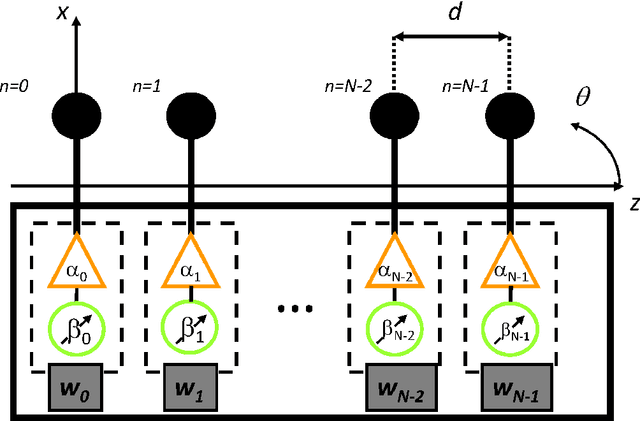
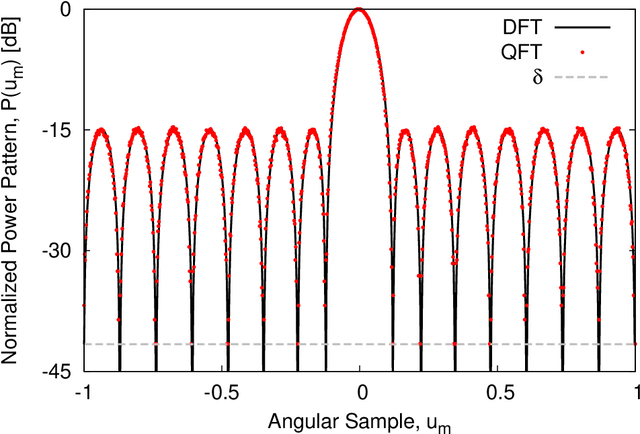
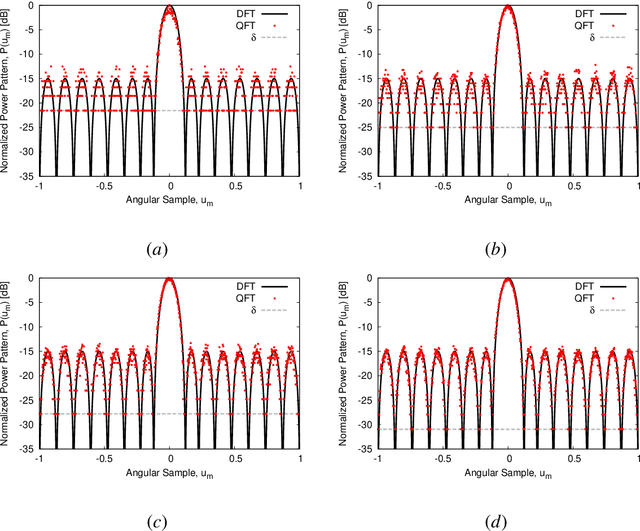
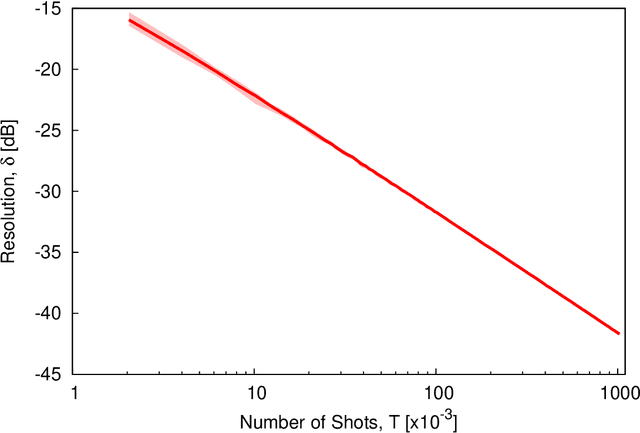
Abstract:A method for the analysis of the power pattern of phased array antennas (PAs) based on the quantum Fourier transform (QFT) is proposed. The computation of the power pattern given the set of complex excitations of the PA elements is addressed within the quantum computing (QC) framework by means of a customized procedure that exploits the quantum mechanics principles and theory. A representative set of numerical results, yielded with a quantum computer emulator, is reported and discussed to assess the reliability of the proposed method by pointing out its features in comparison with the classical approach based on the discrete Fourier transform (DFT), as well.
Spline-Shaped Microstrip Edge-Fed Antenna for 77 GHz Automotive Radar Systems
Jul 26, 2022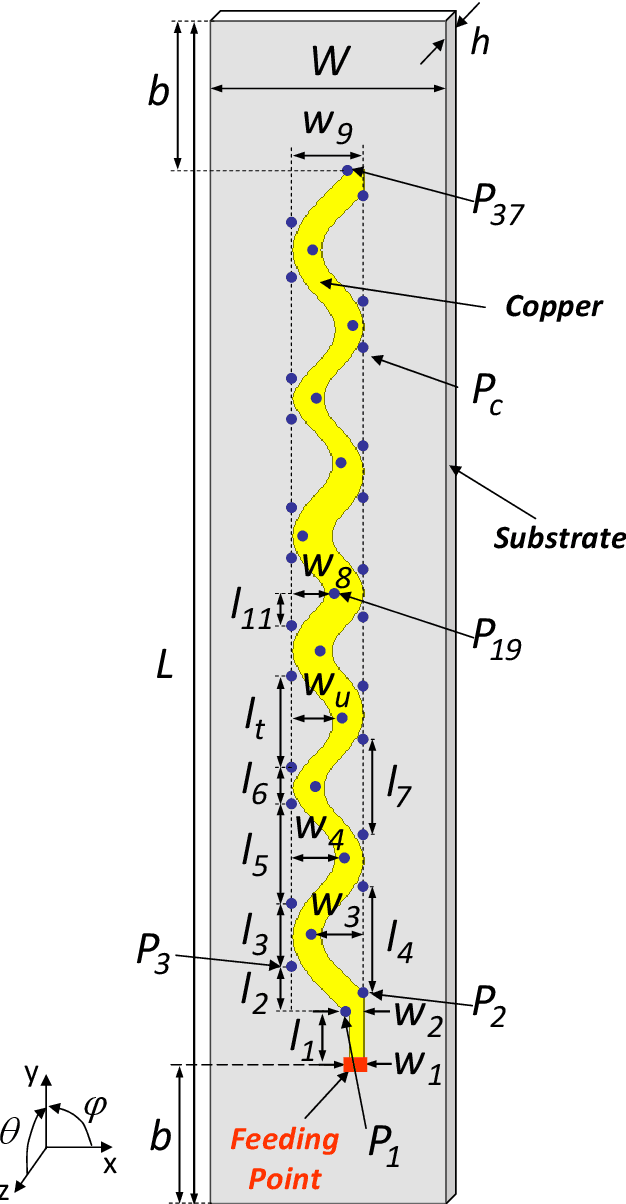


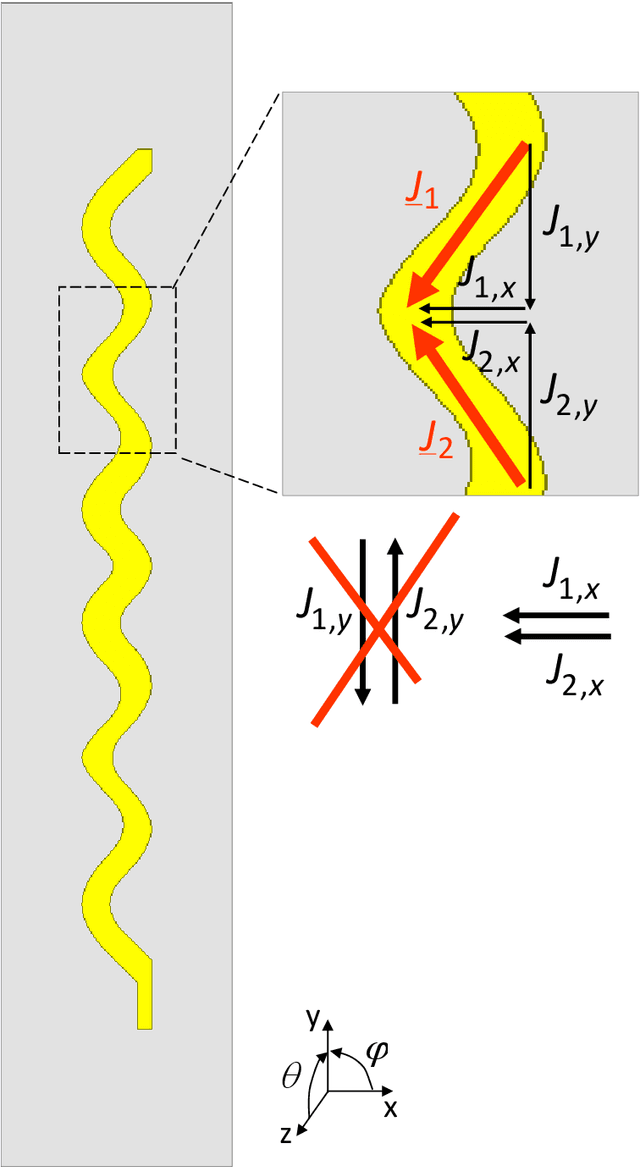
Abstract:An innovative millimeter-wave (mm-wave) microstrip edge-fed antenna (EFA) for 77 GHz automotive radars is proposed. The radiator contour is modeled with a sinusoidal spline-shaped (SS) profile characterized by a reduced number of geometrical descriptors, but still able to guarantee a high flexibility in the modeling for fulfilling challenging user-defined requirements. The SS-EFA descriptors are effectively and efficiently optimized with a customized implementation of the System-by-Design (SbD) paradigm. The synthesized EFA layout, integrated within a linear arrangement of identical replicas to account for the integration into the real radar system, exhibits suitable impedance matching, isolation, polarization purity, and stability of the beam shaping/pointing within the target band [76:78][GHz]. The experimental assessment, carried out with a Compact Antenna Test Range (CATR) system on a printed circuit board (PCB)-manufactured prototype, assess the reliability of the outcomes from the full-wave (FW) simulations as well as the suitability of the synthesized SS-EFA for automotive radars.
Modular Sparse Conical Multi-beam Phased Array Design for Air Traffic Control Radar
Aug 18, 2021



Abstract:The design of a conical phased array antenna for air traffic control (ATC) radar systems is addressed in this work. The array, characterized by a fully digital beam-forming (DBF) architecture, is composed of equal vertical modules consisting of linear sparse arrays able to generate on receive multiple instantaneous beams pointing along different elevation directions. The synthesis problem is cast in the Compressive Sensing (CS) framework to achieve the best trade-off between the antenna complexity (i.e., minimum number of array elements and/or radio frequency components) and radiation performance (i.e., matching of a set of reference patterns). Towards this aim, the positions of the array elements and the set of complex element excitations of each beam are jointly defined through a customized CS-based optimization tool. Representative numerical results, concerned with ideal as well as real antenna models, are reported and discussed to validate the proposed design strategy and point out the features of the deigned modular sparse arrays also in comparison with those obtained from conventional arrays with uniformly spaced elements.
 Add to Chrome
Add to Chrome Add to Firefox
Add to Firefox Add to Edge
Add to Edge